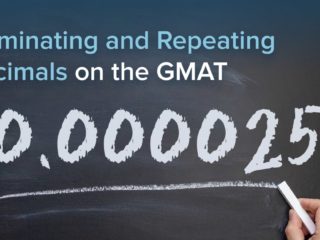Last Updated on May 5, 2023
GMAT OFFICIAL GUIDE PS
Solution:
The easiest way to solve the problem is to plug in some real numbers for a, b, and c. Since we know they are consecutive and we know that a < b < c, we can say:
a = 1
b = 2
c = 3
or
a = 2
b = 3
c = 4
It is good to test two cases because in our first case we start with an odd integer and in the second case we start with an even integer.
Let’s use these values in each Roman numeral answer choice. Remember we need to determine which answer must be true, meaning in all circumstances.
I. c – a = 2
Case #1
3 – 1 = 2
Case #2
4 – 2 = 2
I must be true. Note that we also know this will always be true because the numbers are consecutive, so the first and third number in the list will always be two apart.
II. abc is an even integer.
Case #1
1 x 2 x 3 = 6
Case #2
2 x 3 x 4 = 24
II must be true. Note that we also know this will always be true because in any list of three consecutive integers, one number will always be even, and even times any other integers always results in an even integer.
III. (a + b + c)/3 is an integer.
Case #1
(1 + 2 + 3)/3 = 6/3 = 2
Case #2
(2 + 3 + 4)/3 = 9/3 = 3
III must be true.
I, II, and III are all true.
Answer: E



